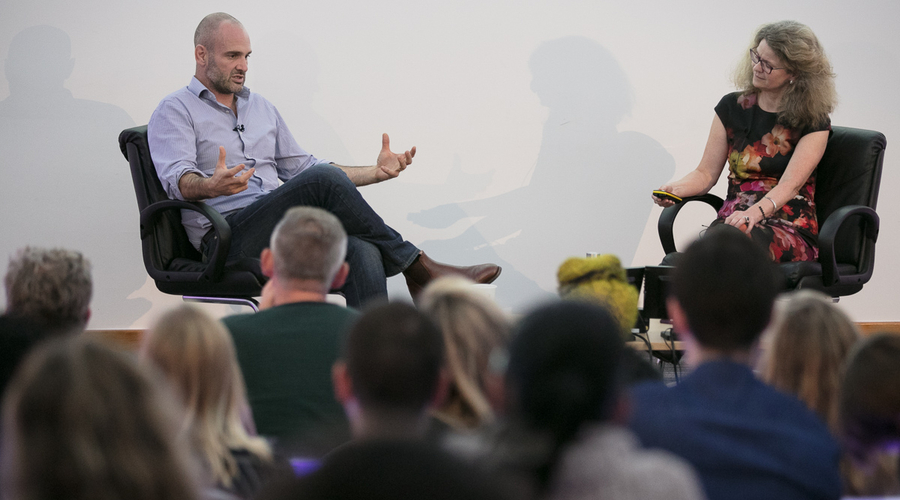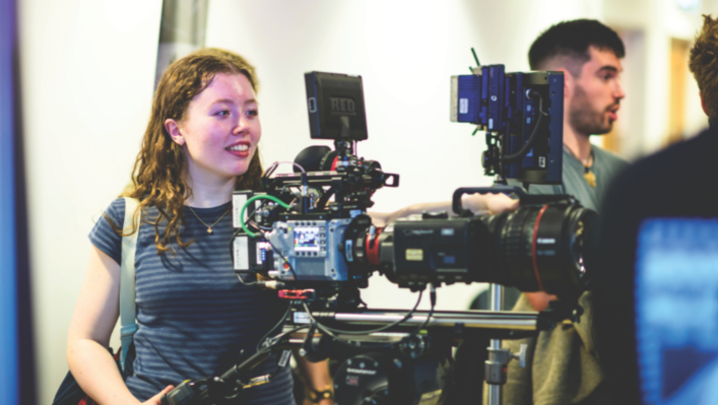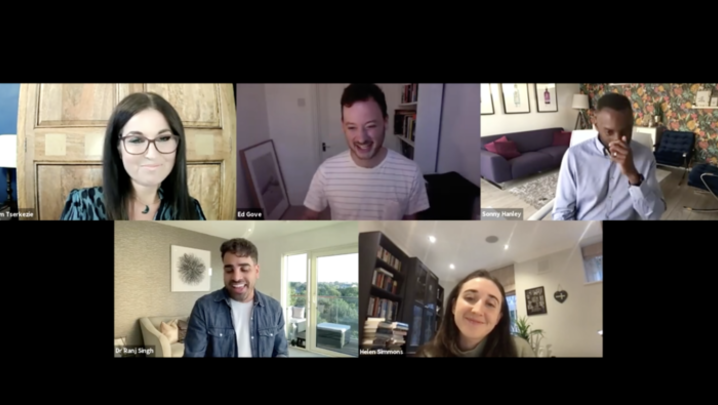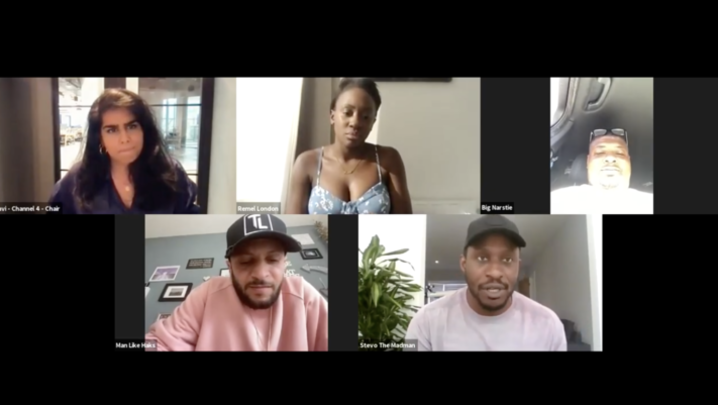Matthew Bell hears how ex-army captain Ed Stafford learnt to film his own survival stories for TV
Ed Stafford is more than an adventurer. The first man to walk the length of the Amazon is also a film-maker of some repute. At an RTS Futures event, he presented a self-shooting masterclass illustrated by clips from his survival programmes.
In 2008, equipped with cameras from Ginger TV (the company that hired him), Stafford set out from the Peruvian Andes to begin a 9,700km quest to walk the Amazon.
Two years and four months later, he reached the mouth of the river with enough footage for his first series, the two-part Walking the Amazon, shown on Channel 5 and Discovery in 2011.
Liz McIntyre, director of Sheffield Doc/Fest, interviewed the former British Army captain at the RTS Futures event. In a previous job, as a Discovery commissioner, she had green-lit Stafford’s shows for the channel, including 2013’s Naked and Marooned, made by Tigress Productions.
The concept for this survival series was simple but forbidding. “If you were dropped off stark bollock naked on an island, without a knife, without food, without any contact with the outside world for 60 days, would you be able to survive?” asked Stafford.
On the Pacific Ocean desert island, the only equipment – other than a camera – allowed was a medical kit and a satellite phone to send texts in the event of an emergency.
Stafford survived and made a compelling series, but he was not afraid to admit that it had been a gruelling experience.
“It’s all well and good to have ideas,” he said, “but I didn’t think it through. It was an utter baptism of fire. I’d never spent more than two days on my own and now I had 60 days.”
The production company used a drop-box system on Naked and Marooned to send replacement camera batteries and any filming instructions to Stafford. Twice a week, a boat would leave the production base on a nearby island, pick up dead batteries and make a drop – no actual contact was allowed with Stafford.
“I’ve never said this in public before, but I once snuck down to the drop box when [the boat] was coming in to pick it up, which I wasn’t meant to do.
“I literally hid in the bushes because I just wanted to see [people]. They didn’t know I was there,” Stafford confessed.
The adventurer wrote a book, also called Naked and Marooned, about his experience on the desert island, in which he admitted that he received psychological help after leaving the island.
During his ordeal, Stafford felt that “I was losing my mind, while trying to document the whole thing at the same time – it was the most extraordinary thing I’ve ever done in my life.
“This is not in the remotest sense a sob story, because [there] couldn’t have been a more intense period when I learnt more about myself.”
Discussing a production company’s duty of care to people appearing in its programmes, he warned against putting “people who have a lust to make a name for themselves on TV into ridiculous situations. Essentially, they are a guinea pig and you’re watching someone’s mind unfold on camera.”
Stafford told the RTS Futures audience that he was “not blaming anyone and took full responsibility for what I [had] signed up for”, but added that other people could be more vulnerable.
In all the places he films, Stafford meets local, often indigenous, inhabitants first to learn about their way of life. “It would be arrogant and crass for an ex-army bloke to come into each environment and just do his thing without paying respect to local people,” he said.
Looking back over the series he has made, Stafford said: “The thing that I am now genuinely proud of in these shows is that they’re not just about killing a snake or crossing a river – they have an emotional depth to them.
“I’m learning stuff about myself and how to live my life. Discovery has given me the opportunity to turn that into a TV programme.
“That the audience can go away and learn the same thing is great – we have almost managed to transcend the [survival] genre.”
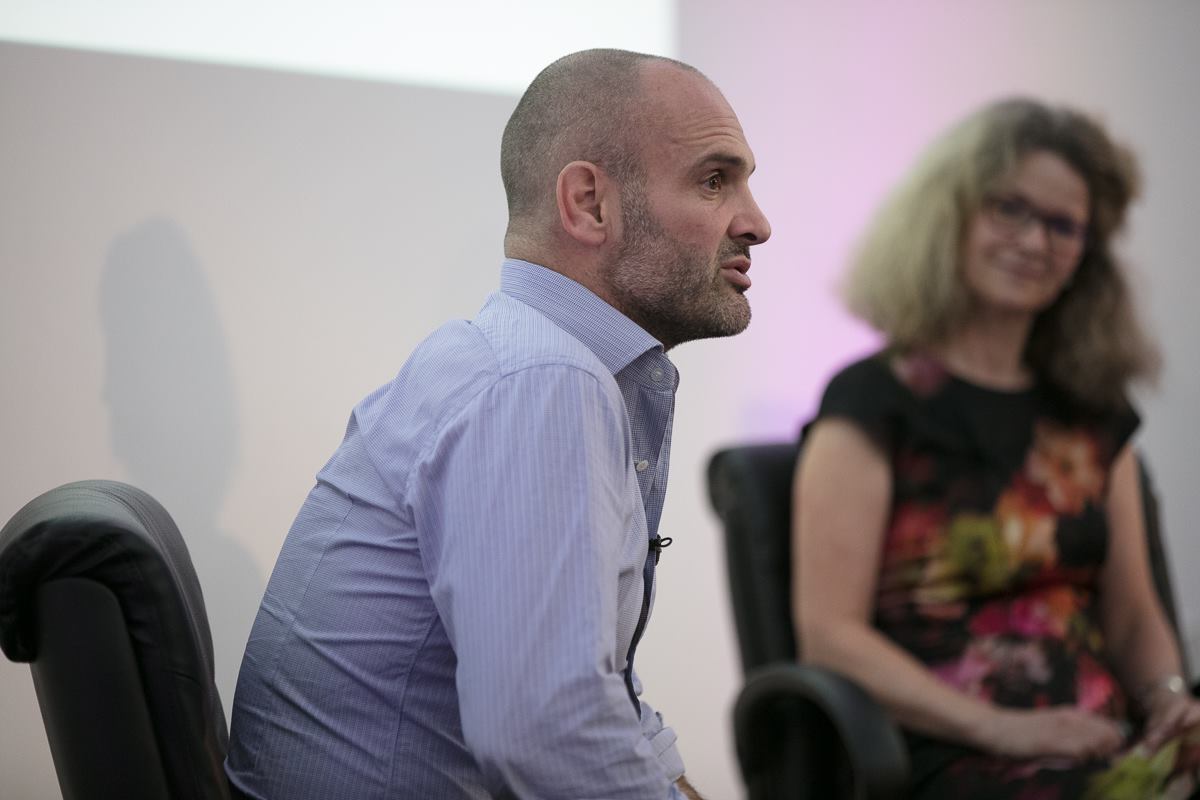
The art of shooting a survival series
Ed Stafford revealed at the RTS Futures event that his inspiration for Walking the Amazon was Bruce Parry, an earlier TV adventurer.
Parry had filmed and presented Cannibals and Crampons (an episode for the 2002 BBC One series Extreme Lives), about his ascent of a mountain in the Indonesian part of New Guinea.
‘I thought that if I could go away and do something like [that], take a camera and make a film about it, then I would be able to make a career for myself in TV,’ said Stafford. ‘It was always [my] strategy; it wasn’t just this romantic notion of walking the Amazon and being completely purist about it.’
Stafford made Walking the Amazon after just ‘half a day’s film training on Streatham Common’, he recalled.
No amount of UK training, though, would have prepared him for shooting in South America. ‘I was held up at gunpoint three times, at arrowpoint three or four times, I was arrested for murder once and drugs trafficking another time – and I didn’t get any of it on camera because I was scared,’ he said.
Since making Walking the Amazon, Stafford has come on leaps and bounds as a film-maker. ‘[Now], I am very much aware of the exact moments that I need to film. The moment I get scared, the camera’s on; any extremes of emotion and I know that I need to record it, but that came through the experience of being extraordinarily frustrated with myself for not fully capturing that [Amazon] expedition.’
For Tigress Productions’ Marooned with Ed Stafford, shown in 2014, the adventurer spent 10 days alone in some of the world’s remotest areas.
Armed with a selection of GoPros and hand-held cameras, Stafford returned with stunning footage from, among other places, Patagonia and Guatemala. ‘There were two projects going on: the first was getting enough food in order to survive; the second was making a cool film about it.’
Stafford has embraced the opportunity ‘to be artistically creative’ and admitted that film-making ‘is more interesting to me now than the survival part’.
His role, however, finishes with the filming: Stafford is not involved in the edit. ‘I’ve been really lucky in having amazing editors,’ he said.
‘When we started making these survival shows I was really worried, especially [on Naked and Marooned and] spending 60 days on that island. It was such an emotional journey that I thought, “How on earth are they going to be able to take that and turn it into even a close representation of what happened?”’
Stafford saw a rough cut, however, and ‘couldn’t believe how close it was to what I went through’.
He added, to audience laughter: ‘They make you look like a hero, despite all the shit footage.’
The RTS Futures event, ‘Self-shooting masterclass with Ed Stafford’, was held at the Cavendish Conference Centre in London on 12 October. It was produced by Phil Craig, Iestyn Barker and Jack Oliver.

